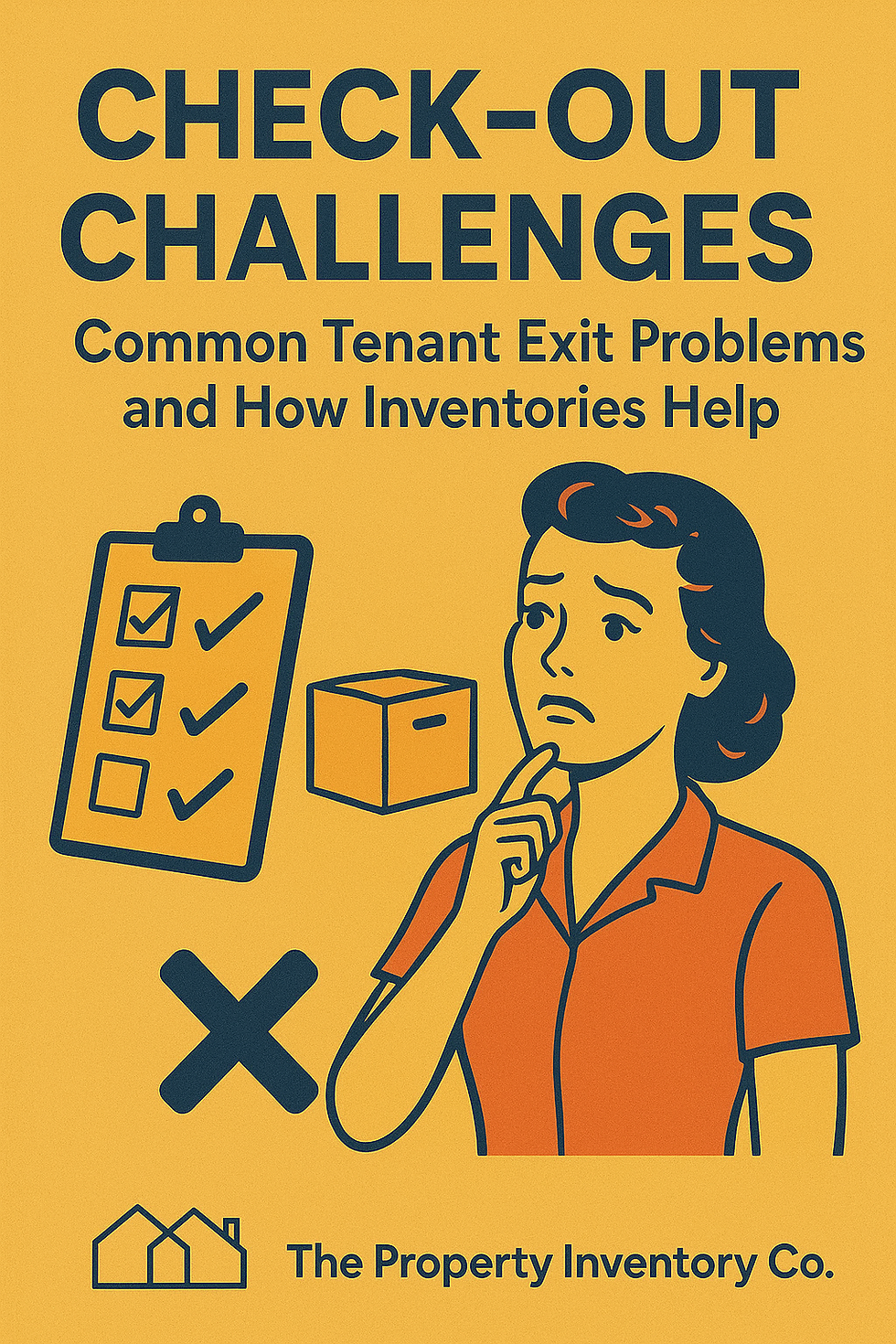What Happens During a Property Check-In?
- Property Inventory Co.

- Aug 11
- 3 min read

A Step-by-Step Guide for Landlords and Tenants
Whether you're a landlord preparing for a new tenancy or a tenant moving into your new home, the check-in process is one of the most important stages of the tenancy lifecycle. It lays the foundation for a smooth tenancy by documenting the property’s condition and ensuring everyone starts on the same page.
At The Property Inventory Company, we make the check-in process simple, thorough, and professional — helping protect all parties involved. Here’s exactly what happens during a property check-in, and why it matters.
1. Key Handover & Access
The check-in usually takes place on the day the tenancy begins or shortly before. One of our trained inventory clerks meets the tenant (or letting agent) at the property to:
Confirm identity and tenancy details
Hand over the property keys and document how many sets are issued
Record key types for doors, windows, garages, mailboxes, etc.
This ensures there's a clear record of exactly which keys were given and when.
2. Inventory Report Review
A detailed inventory and schedule of condition report will have already been prepared, listing:
All items, fixtures, and fittings within the property
The condition and cleanliness of each room
Notes on décor, flooring, appliances, and furnishings
High-resolution, time-stamped photographs
During the check-in, the tenant can review the report on-site and raise any immediate observations. Transparency at this stage helps prevent disputes later on.
3. Photographic Evidence
To provide visual support to the written descriptions, our clerks take:
Comprehensive photographs of each room and item
Close-ups of any existing wear, marks, or damage
Photos of meter readings, fire alarms, and safety features
Images of communal areas in HMOs or shared spaces
This level of detail provides an impartial, timestamped snapshot of the property at the start of the tenancy.
4. Meter Readings & Safety Checks
Our clerk records gas, electric, and water meter readings at check-in. This helps establish:
Fair billing from day one
Transparency for both landlords and tenants
Accuracy for utility account setup
We also check the presence and status of smoke alarms, carbon monoxide detectors, and any visible safety concerns.
5. Signatures and Agreement
At the end of the visit, the tenant is invited to:
Sign the inventory report to confirm the property’s condition
Raise any minor discrepancies that can be noted in the document
Keep a copy of the signed report for their records
If the tenant is not present in person, the report is shared digitally for remote signing and review — with clear instructions and a reasonable window for comments.
6. Delivery of the Final Report
The signed, finalised report is delivered to all relevant parties in digital PDF format. It can be:
Viewed online via a secure link
Downloaded and printed for future reference
Used as evidence in the event of a deposit dispute at the end of the tenancy
Tenants and landlords alike benefit from having this professional, third-party documentation — complete with high-quality images and condition notes.
Why a Proper Check-In Matters
For landlords: It helps protect against unfair damage claims, supports deposit deductions, and demonstrates compliance with tenancy deposit protection schemes.
For tenants: It offers peace of mind that they won’t be held responsible for pre-existing issues.
For agents: It reduces admin and provides a neutral, legally sound foundation for the tenancy.
Book a Professional Check-In with Confidence
At The Property Inventory Company, our check-in reports are detailed, impartial, and tailored to each property. Whether you’re managing a single buy-to-let or multiple HMOs, our service helps you start every tenancy with clarity and professionalism.
Ready to book your next check-in? Contact us here or learn more about our services in East Sussex and Kent.
01435 508118
07428 821141




Comments